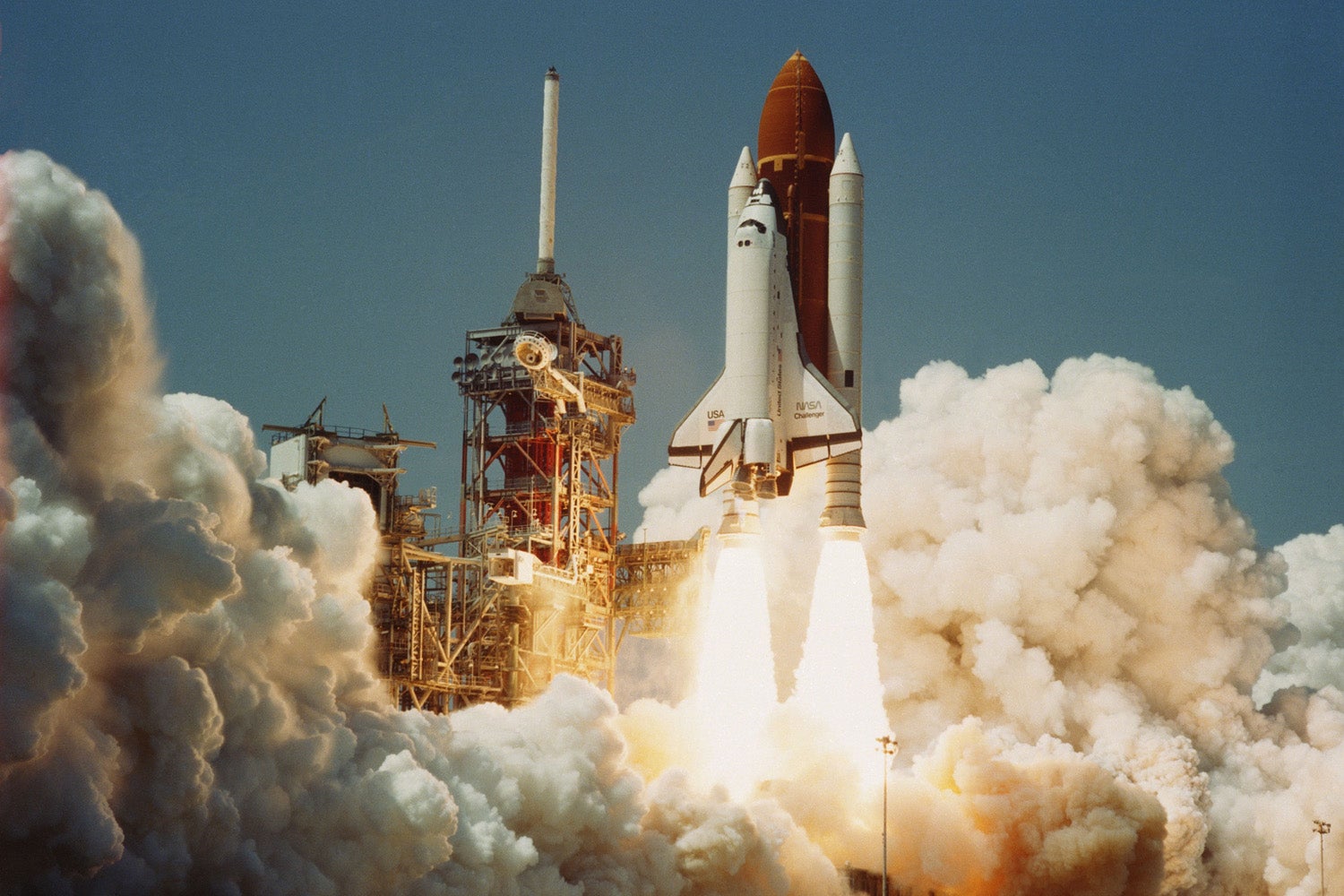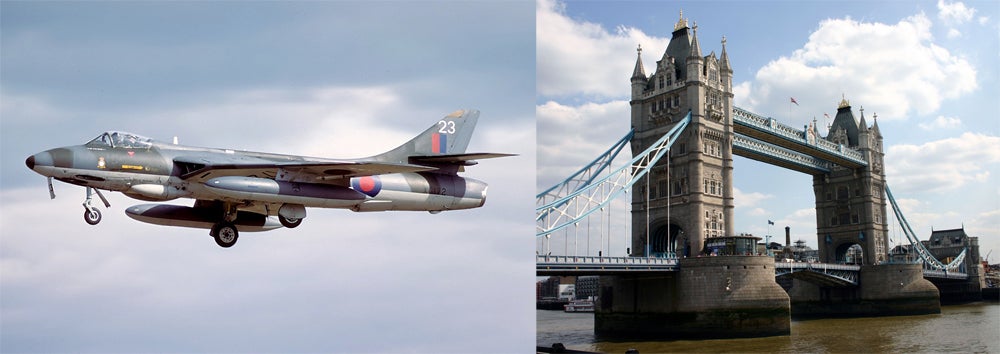 "ttyymmnn" (ttyymmnn)
"ttyymmnn" (ttyymmnn)
04/06/2015 at 11:00 • Filed to: planelopnik, planelopnik history
 3
3
 2
2
 "ttyymmnn" (ttyymmnn)
"ttyymmnn" (ttyymmnn)
04/06/2015 at 11:00 • Filed to: planelopnik, planelopnik history |  3 3
|  2 2 |
Here is today's Planelopnik History Speed Round , getting you caught up on milestones and important historical events in aviation from the past few days.

April 4, 1983 – Launch of the Space Shuttle Challenger on NASA Mission STS-6. This was the sixth Space Shuttle mission, and the maiden flight of the Challenger. During the flight, astronauts deployed the first Tracking and Data Relay Satellite (TDRS-1), and conducted the first spacewalk from a Shuttle, employing the Extravehicular Mobility Unit (EMU) spacesuit for the first time. Challenger returned to Edwards Air Force Base on April 9.

April 4, 1957 – The first flight of the English Electric Lightning. The Lightning was the only Mach 2 fighter designed and built solely by the British. Its primary role was as a fighter interceptor, though during more than twenty years of service it was never required to attack an enemy aircraft. Powered by two Rolls-Royce Avon engines in a unique stacked configuration, the Lightning was reportedly the first fighter jet capable of supercruise.

April 4, 1917 – The first flight of the SPAD S.XIII.
Developed by
Société Pour L'Aviation et ses Dérivés
(SPAD) from the earlier, highly successful SPAD S.VII, the S.XIII was one of the best fighters of WWI. Over 8,000 were produced, and an additional 10,000 more were on order when the war ended. Armed with two Vickers machine guns and powered by a Hispano-Suiza engine, the S.XIII was faster than both the Sopwith Camel and the Fokker D.VII.
Above, American ace Eddie Rickenbacker with his SPAD S.XIII.

April 5, 1996 – The first flight of the Lockheed Martin C-130J Super Hercules. The C-130J is the latest version of the venerable Hercules aircraft, and the only model still being produced. Upgrades incorporated into the J model include new Rolls-Royce AE 2100 turboprop engines with composite scimitar propellers and digital avionics. The Super Herk enjoys a 40% increase in range, a 21% increase in speed and a 41% shorter takeoff distance compared to the E and H models. The J is operated by the US Air Force, Marines and Coast Guard, as well as numerous international partners.

April 5, 1976 – Howard Hughes dies aboard a Learjet at age 70 . Hughes was a famous yet reclusive tycoon whose business interests included investments, filmmaking and aerospace engineering. He formed the Hughes Aircraft Company, and set numerous world records in the aircraft he produced. Hughes is best known for building and briefly flying the H-4 Hercules , better known as the Spruce Goose , the largest flying boat ever built, with the largest wingspan of any aircraft in history. It is perhaps fitting that he died on board an aircraft, though even the details of his death remain unclear, a further testament to his reclusive nature.

April 5, 1968 – Upset by the lack of an aerial display to mark the 50th anniversary of the founding of the RAF, Flight Lieutenant Alan Pollock of No. 1(F) Squadron protested by beating up several RAF airfields in his Hawker Hunter before heading to downtown London. There he circled the Houses of Parliament and saluted the RAF Memorial by dipping his wings. He followed that up with a flight under the top span of the Tower Bridge , a feat that made him the first ever to fly through the bridge in a jet aircraft. Pollock then beat up a few more airfields before returning to base inverted at 200 feet. Pollock was arrested, but never faced a court martial, as he was dropped from service on medical grounds before a trial could be held.

April 6, 1938 – The first flight of the Bell P-39 Airacobra. One of the principal American fighters at the beginning of WWII, the Airacobra saw service most effectively with the Soviet Air Force, where it was credited with the highest number of kills by any US-built fighter type. Its unique design placed the engine behind the pilot, and it was armed with a 37mm canon firing through the propeller hub, complemented by two .50 caliber Browning machine guns in the nose and one each on the wings. The lack of an efficient turbo-supercharger hampered the P-39's high altitude performance, and limited it to low-altitude operations.
 VolksytheBug
> ttyymmnn
VolksytheBug
> ttyymmnn
04/07/2015 at 18:20 |
|

What a badass. That does not look like a very big area to stick a large jet through.
 ttyymmnn
> VolksytheBug
ttyymmnn
> VolksytheBug
04/07/2015 at 18:25 |
|
It's a great story. And he had tons of public support, so the government was fortunate they didn't have to try him. It would have been an embarrassment. The Hunter is a decent sized jet, so no, there's not much room. He probably would have been forgiven the other stunts, but that was downright crazy. And brilliantly ballsy.